Sony Xperia 5 III review: Expensive purchase that only fans will buy
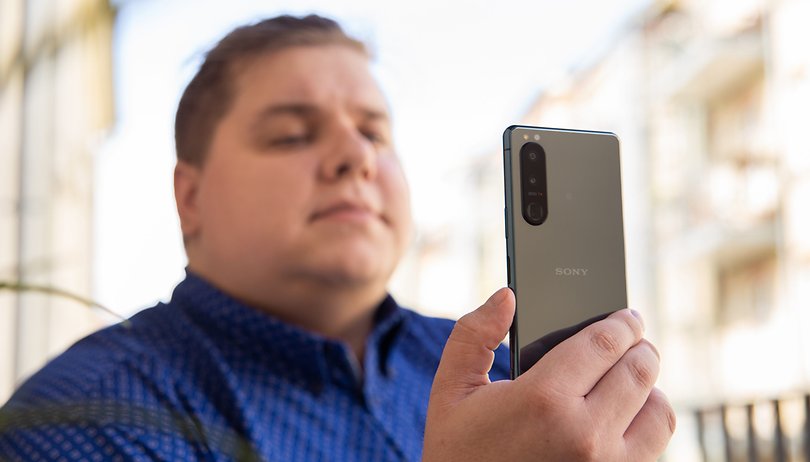

First announced on April 14 and still unavailable in many different countries worldwide, the Sony Xperia 5 III is the compact alternative to Sony's latest flagship, the Xperia 1 III. I reviewed this smartphone which places a heavy emphasis on multimedia and photography to tell you whether the $999 price tag is worth the entry price or not.
Good
- Smooth 120Hz OLED screen
- Solid battery life
- Versatile camera module with dual focal length
- IP68 rating, 3.5mm jack, microSD
- Clean, feature-rich interface
Bad
- Overheating issues and and aggresive thermal throttling
- Wide-angle and ultra-wide-angle sensors are a bit dated
- No dedicated Night Mode
- Simply too expensive
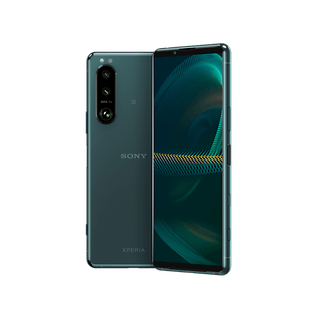
Sony Xperia 5 III in a nutshell
The Sony Xperia 5 III was announced on April 14 this year but has still yet to be released officially worldwide, Europe included. In fact, pre-orders for the handset have not been opened even until now. Still, we already know that the smartphone will be sold for $999 a pop, and that it will arrive in two configurations of 8GB RAM/128GB storage and 8GB RAM/256GB storage.
I had the smartphone for a week to review, using it as my daily driver for both work and leisure purposes. I am not a Sony fanboy nor a fan of the 21:9 aspect ratio that is normally found in Xperia smartphones, but nevertheless, I generally enjoyed my time with the Sony Xperia 5 III.
The slightly more compact and slightly less premium variant of the Xperia 1 III that my colleague Ben reviewed is a very compelling proposition from Sony where the high-end Android segment is concerned. The 120Hz OLED display is buttery smooth, while the Snapdragon 888 SoC continues to be powerful enough for just about every single task you can throw at it despite its overheating issues, with the 4500mAh battery being very durable.
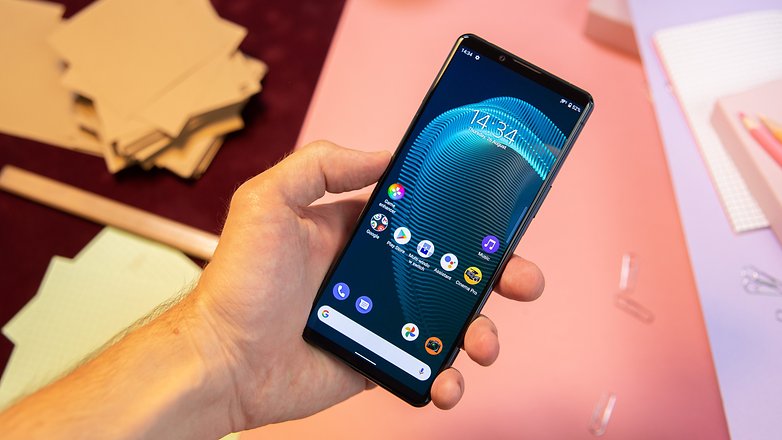
What I found to be the most interesting of all is the camera module where Sony has included a telephoto lens with dual focal lengths to offer two levels of optical zoom, 2.9x and 4.4x. Add to that a slightly too elitist but very complete photo application and a physical button that serves as a camera shutter, and the end result is a smartphone that best emulates the photo experience you would enjoy with a regular camera.
I really have very few complaints about the Sony Xperia 5 III apart from the price which I think is a wee bit too steep. This seems to be a recurring experience with Sony's Xperia line every single year. What gives, Sony?
Design and screen
When it comes to the design, we find the recipe used in the previous Xperia, sporting a long and thin 21:9 format, a glass back and an aluminum frame. The 6.1-inch OLED display offers a 120Hz refresh rate.
What I liked:
- Gorilla Glass 6 on the screen and back
- Aluminum frame
- 21:9 aspect ratio (for those who like it)
- Smooth screen in 120 Hz refresh rate
- IP68 certification and 3.5mm jack
- Lightweight
What I disliked:
- Glass back is a fingerprint magnet
- 21:9 aspect ratio (for those who don't like it)
- Maximum brightness of 600 nits
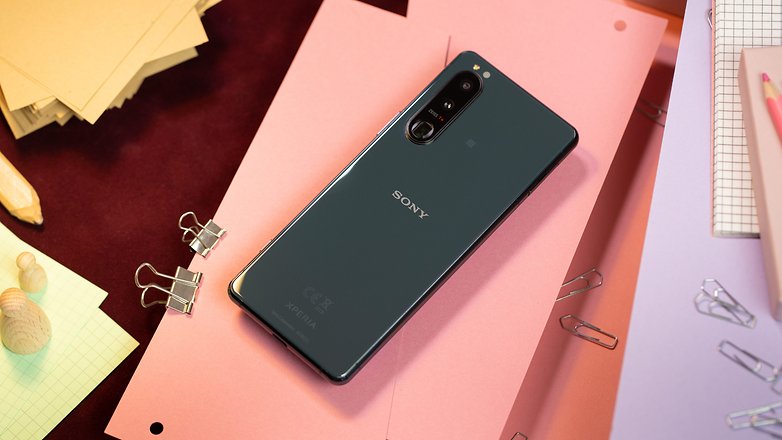
Let the fanboys, fangirls, and basically, fans of the 21:9 aspect ratio calm down right now. I don't see this 21:9 aspect ratio as a flaw. I understand that it can be an interesting experience for some when it comes to consuming video content. Personally, I cannot appreciate it, especially when I'm gaming, as I always feel like my fingers are cramped and I have to squint more. This is a personal and subjective opinion, but I repeat that the 21:9 aspect ratio is not a defect in any way. THAT'S IT! At least we are now even.
As for the rest of the design, it simply oozes with quality. There is an aluminum frame that ditches cheap plastic, a glass back that once again, eschews plastic, with the entire device covered with Gorilla Glass 6. The back is a real fingerprint magnet, so beware. This is a fundamental 'flaw' that comes with all modern flagship smartphones which use glass all over, right?
The fingerprint reader is located at the edge right under the power button and is quite responsive and accurate. The SIM (and microSD) port can be opened without a metal pin without compromising the waterproof rating (IP68 certification). The pill-shaped camera module is not very modern but has the merit of not protruding too much.
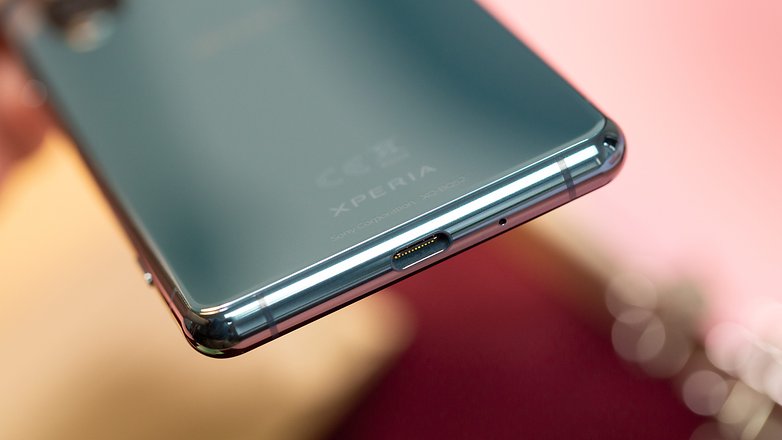
As for the screen, it's virtually identical to the one found in last year's Xperia 5 II. I say virtually identical because I can only comment on the specifications, as I do not know for sure if it is the same panel. It's a 6.1 inch OLED screen with a 1080 x 2560 pixel resolution in 21:9 format and a refresh rate of 120 Hz.
Pixel density remains excellent even if Sony could have released it in 4K instead of reserving it for the Xperia 1 III. The maximum brightness level hovers around 600 nits, which is not exceptional but still decent enough for good visibility in all circumstances. In any case, summer in Berlin is over and we're in for six months of endless nights, so there's no need to have 1,000 nits, right?
The 120 Hz refresh rate is not supposed to be adaptive, so once it is activated, you will benefit from it all the time. Some apps will force 60 Hz (like Google Maps) at times, but basically, we would recommend you keep a close eye on your battery life most of the time. I found the default white balance to be too cold, but the Standard color mode seemed to be rather accurate overall.
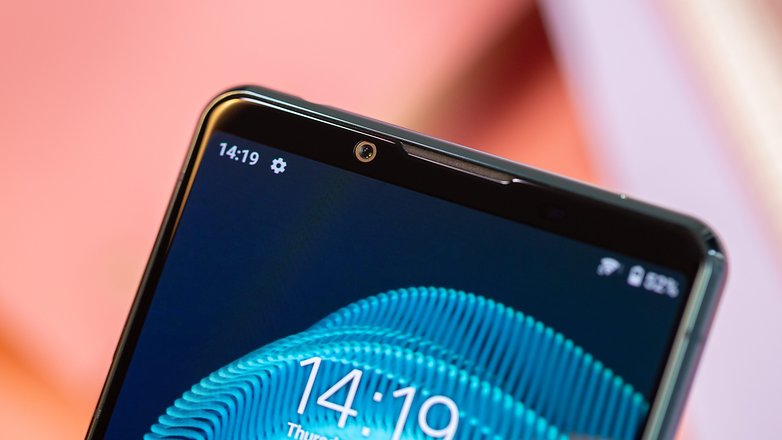
Overall, the Sony Xperia 5 III sports a premium and neat design. The long and thin form factor will appeal to fans of compact smartphones, as will the featherweight 168 grams form factor (a record for a flagship in 2021). The screen is buttery smooth with a 120 Hz refresh rate despite having a maximum brightness level that is below what you would find in the flagship smartphone range.
Interface: Stock Android look but packed with features
As always, Sony offers a user interface experience that is visually similar to stock Android Stock. There is a number of pre-installed applications but it is also armed with a slew of customization options that helps you optimize video/audio quality, gaming, and multitasking to your personal preference.
What I liked:
- The stock Android look
- Intuitive multitasking process
- Plenty of audio and video customizations
- Efficient Game Enhancer mode
What I disliked:
- Limited software update policy
Visually, Sony's interface was developed for purists who swear by stock Android. That's not my case, but I do appreciate the simplicity of the menus and the overall uncluttered look found in the UI. But that's just on the surface, because the Sony Xperia's interface is packed with features and customization options.
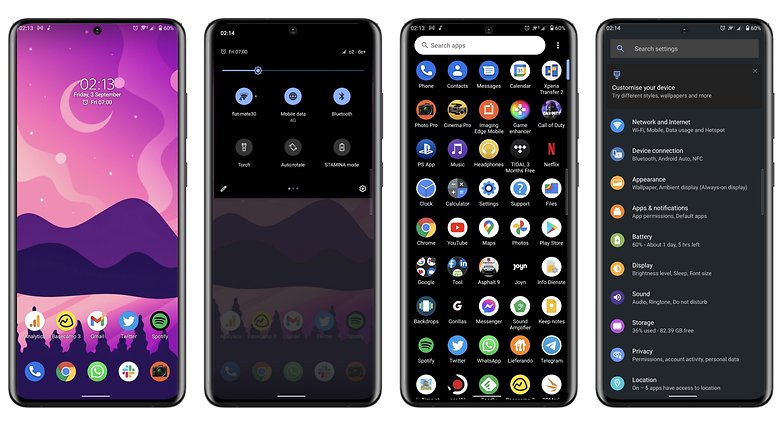
Let's begin with the multitasking aspect. Sony offers shortcuts to create floating windows or to display pairs of applications in split-screen format. I'm aware that these are Android-wide features that are obviously not exclusive to Sony, but I find their implementation to be more intuitive than on other Android skins.
Another feature that is exclusive to Sony this time is the Side Sense sidebar which allows you to create shortcuts to specific apps or features in addition to app pairs. This bar can be activated via a hidden floating button on the right side of the screen, which makes it quite convenient to use.
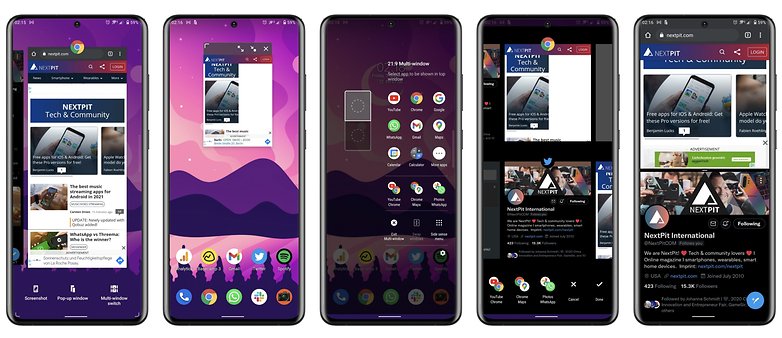
I liked the number of options to optimize video and audio quality, with the ability to enable Dolby Atmos sound, Sony's proprietary 360 Spatial Audio technology, and DSEE Ultimate mode that allows you to "upscale" your audio stream. Sony also offers a dynamic vibration function that adapts itself to the sound played through the speakers. If the system works quite well in terms of responsiveness, I find the vibration engine to be too coarse for this option in order to appreciate it fully.
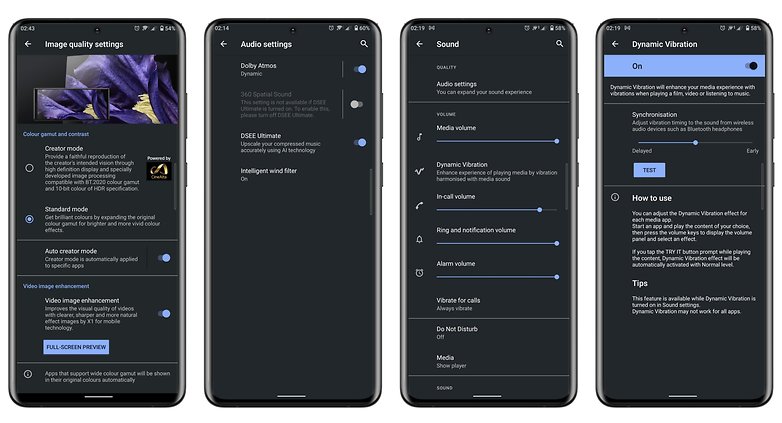
Sony also remembered gamers by offering a mode known as Game Enhancer. Compared to the Fnatic mode and other equivalents in its Android competitors, I find Sony's mode to be particularly advanced, especially for a smartphone that does not has a gaming label attached to it. There are options that allows you to optimize audio and microphones, colorimetry, performance, etc.
We' have not yet reached the level of Armory Crate on an Asus ROG Phone 5 either, but it's really nice to have so many choices from a range of options, most of which are quite relevant (optimizing the microphone, the touch area on the screen, RAM utilization, etc).
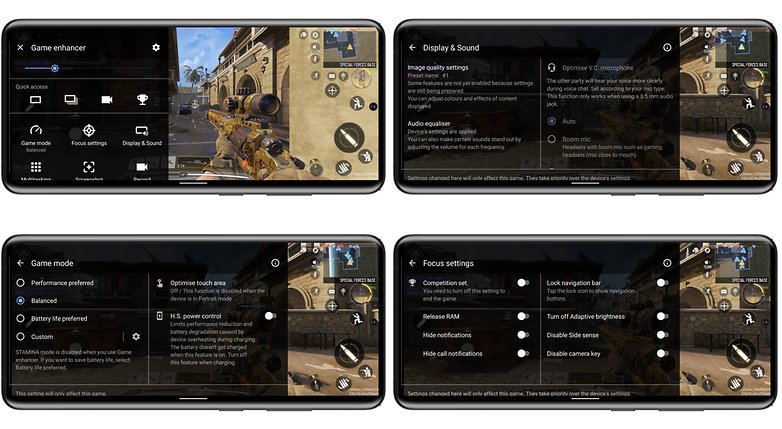
I could also talk about the photo application, which would deserve an article of its own. But since it was already introduced on the Xperia 1 II last year and my colleague Ben already talked about it in-depth in his review of the Xperia 1 III, I'll spare you from hearing repeated drivel this time around.
Finally, Sony is not a company that will hit the ball out of the park when it comes to software maintenance. You can expect a 'mere' 2 major Android releases (up to Android 13) and 3 years of security patches, probably on a quarterly basis at best.
Overall, I find the software solution offered by the Sony Xperia 5 III very interesting and complete. Sony knows how to connect with those who pay close attention to the smallest details while catering to the masses as well. The software update policy is simply too limited for a device in this price range in 2021, especially when almost all competitors have more or less shown their cards by offering up to 3 years of software updates and 4 years of security patches.
Performance: The Snapdragon 888 is running on fumes
The Sony Xperia 5 III is powered by Qualcomm's Snapdragon 888 SoC like many other Android flagship devices. And just like many of these Android flagships, it delivers top-notch performance but at the expense of temperature control.
What I liked:
- The raw power of the Snapdragon 888 SoC
What I disliked:
- The Snapdragon 888's overheating issues
- Overly aggressive thermal throttling
In terms of raw performance, the Sony Xperia 5 III ranks in the middle of the pack in the Android market. It doesn't break any computing speed records, but the performance is perfectly consistent with what you'd expect from Qualcomm's top-of-the-line SoC.
For example, I was able to run Call of Duty: Mobile at 120 FPS with all the graphics options cranked up to maximum without missing a beat.
Sony Xperia 5 III
| Benchmark/Model | Geekbench 5 single/multi | 3DMark Wild Life | 3DMark Wild Life Stress Test | Passmark Disk | Passmark Memory |
|---|---|---|---|---|---|
| Sony Xperia 5 III | 1117/3549 | 5839 | 5706 | ||
| Samsung Galaxy S21 Ultra | 942/3407 |
7373 | 5175 | 81.108 | 31.752 |
| Xiaomi Mi 11 Ultra | 1123/3619 |
5621 | Failed, overheated |
115.473 | 30.460 |
| OnePlus 9 Pro | 1112/3633 |
5670 | 5698 |
112.370 | 31.891 |
But the smartphone also suffers from the shortcomings that are often associated with the Snapdragon 888 SoC, namely overheating. Not only does the chip heat up a lot, but Sony includes a far too drastic temperature control by throttling the device too quickly and too aggressively. After half an hour of gaming time, you find yourself suffering from some pretty annoying framerate drops.
On the 3DMark Wild Life Stress Test, which simulates 20 minutes of intensive gaming use, the Sony Xperia 5 III has a stability rate of 59%. Frankly, that's not very good at all.
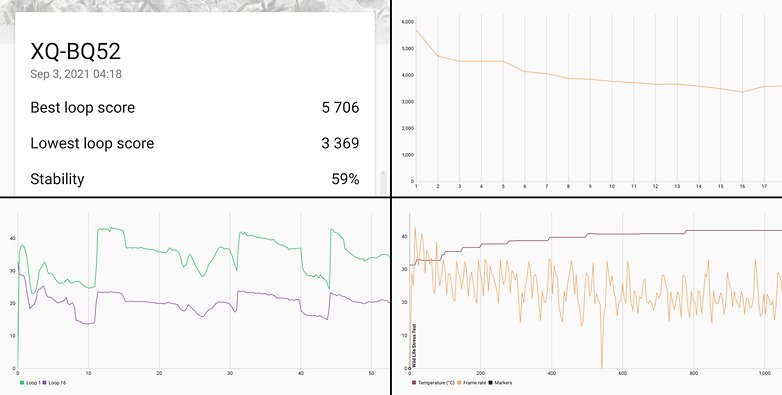
Overall, the Sony Xperia 5 III suffers from similar shortcomings that almost all Android flagships apart from some specialist gaming smartphones with advanced cooling systems. In addition to the overheating problem inherent to Qualcomm's chip, Sony programmed an extremely aggressive thermal throttling profile that somewhat limits the performance potential of the smartphone.
Photo: Natural rendering and double focal length
The Sony Xperia 5 III has a triple camera module at the back with the most notable lens being the telephoto lens that boasts of two different focal lengths to offer 2.9x and 4.4x optical zoom. The basic photo app has also merged with the Camera Pro app to emulate the photo-taking experience that one can enjoy on a DSLR/hybrid system camera. Sony has even taken a step further by adding a physical shutter button on the edge of the smartphone.
What I liked:
- Same camera module as the Xperia 1 III except for the ToF sensor
- Natural color rendering and good exposure management
- Very comprehensive photo application
- Gimmicky but immersive physical shutter button
What I disliked:
- Photo modes and settings are not very intuitive for a newbie
- Aging main and ultra-wide angle sensors
- Overall lack of sharpness
- No dedicated Night Mode
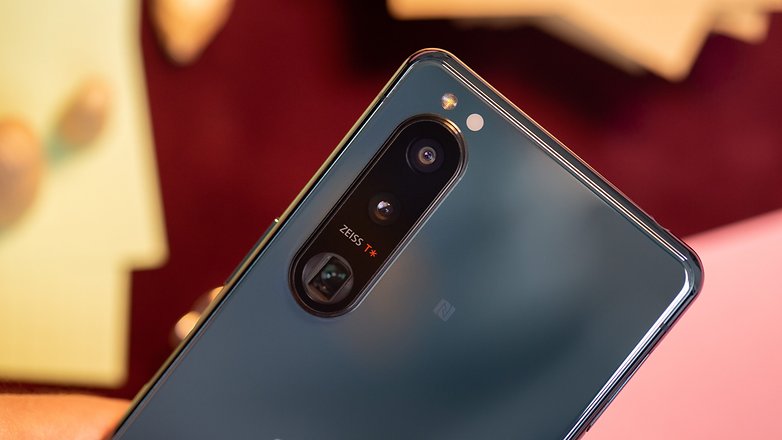
Sony Xperia 5 III
| Lens | Specifications |
|---|---|
| 12 MP wide angle main lens | Sony IMX 557 | f/1.7 | 1/1.7" | 1.8µm | Dual Pixel PDAF | OIS |
| Ultra wide-angle 12 MP | Sony IMX 363 | f/2.2 | FOV 124˚ | 1/2.6" | Dual Pixel PDAF |
| 12 MP telephoto lens | Sony IMX 663 | f/2.3 in 70mm | f/2.8 in 105mm | 1/2.9" | Dual Pixel PDAF | 2.9x and 4.4x optical zoom | OIS |
| 8 MP selfie | Samsung S5K4H7 | f/2.0 | 1/4" | 1.12µm |
Sony Xperia 5 III wide-angle and ultra wide-angle photos
If the novelty of the Sony Xperia 5 III's camera module lies in its telephoto lens, the main wide-angle and ultra-wide-angle lenses will not excite you in any way since they are the same ones found in last year's Xperia 1 II.
- Also read: Which camera smartphone to choose in 2021?

The Sony Xperia 5 III's wide-angle main lens is based on a Sony IMX 557 sensor with a size of 1/1.7 inches, which is smaller than those of the Samsung Galaxy S21 Ultra (1/1.33") or Xiaomi Mi 11 Ultra (1/1.12").
12 MP main lens and 12 MP ultra wide-angle lens
 Main lens 1x Main lens 1x |
 12 MP ultra wide-angle lens 12 MP ultra wide-angle lens |
During the day, I found the shots to look very natural. I'm not diametrically opposed to the more aggressive software processing from Chinese manufacturers unlike 90% of the other tech journalists. However, I find Sony's ultra-light and subtle processing to be quite refreshing, especially when you have good light conditions.

I found its exposure management very efficient too, allowing a wide dynamic range. But I also noticed an overall lack of detail on most shots. There is also some color inconsistency between wide-angle and ultra wide-angle shots.
12 MP main lens and 12 MP ultra wide-angle
 Main lens 1x Main lens 1x |
 12 MP ultra wide-angle lens 12 MP ultra wide-angle lens |
Sony Xperia 5 III telephoto shots
The telephoto lens of the Sony Xperia 5 III is the most interesting element in this camera module. It offers two different focal lengths for two different levels of optical zoom. There's a 70mm equivalent focal length, which offers a 2.9x magnification over the 24mm equivalent of the main lens. Then there is the focal length of 105 mm, which is a 4.4x zoom compared to the main lens. The aperture goes from f/2.3 at 70 mm to f/2.8 at 105 mm.
Telephoto zoom lens x2.9 and x4.4
 Main lens 1x Main lens 1x |
 2.9x telephoto lens (70mm) 2.9x telephoto lens (70mm) |
 Telephoto lens 4.4x (105 mm) Telephoto lens 4.4x (105 mm) |
I found the 2.9x zoom to be generally effective in limiting the loss of detail. This is not the case with the 4.4x zoom. I noticed plenty of artifacts and a lack of sharpness of the images.
Telephoto lens x2.9 and x4.4
 Main lens 1x Main lens 1x |
 Telephoto lens 2.9x (70mm) Telephoto lens 2.9x (70mm) |
 4.4x telephoto lens (105mm) 4.4x telephoto lens (105mm) |
It is also possible to push the zoom digitally to obtain a 300mm equivalent, i.e. a 12.2x zoom. If the rendering is far from being catastrophic and even sometimes rather decent for use, we are still looking at results that fall short of other competitors in the same price range. The 10x zoom of the Galaxy S21 Ultra is much better, for instance.
12.2x telephoto zoom lens
 12.2x telephoto lens (300mm) 12.2x telephoto lens (300mm) |
 12.2x telephoto lens (300mm) 12.2x telephoto lens (300mm) |
I find this dual focal length approach from Sony to be an interesting one. Contrary to Samsung who blurred the line between optical and digital zoom in order to include crazy magnification levels in their marketing material, Sony is more grounded in this matter. We know exactly just which sensor to use and therefore the focal length, as well as the degree of optical magnification that was used to capture a picture. It's not as sexy as a recrop of a wide-angle photo that hides behind the 100x Space zoom moniker, but it works just the same.
Telephoto zoom 2.9x and 4.4x
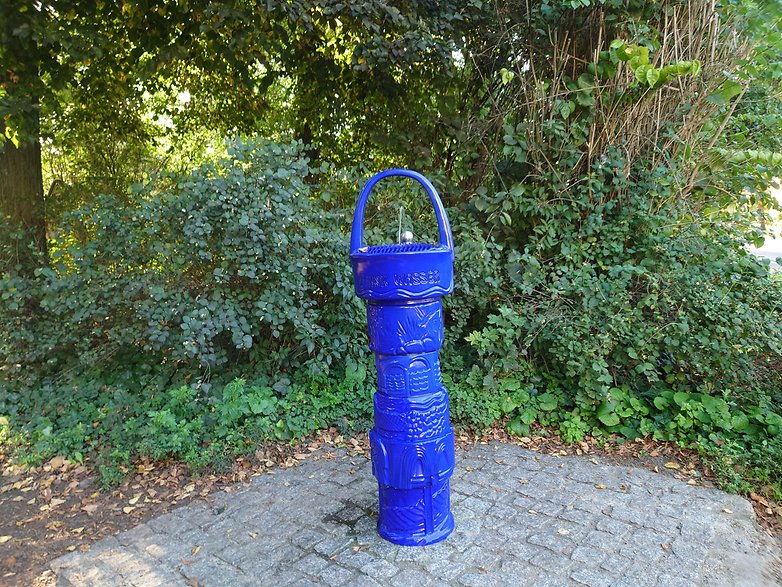 Main lens 1x Main lens 1x |
 2.9x telephoto lens (70mm) 2.9x telephoto lens (70mm) |
 4.4x telephoto lens (105mm) 4.4x telephoto lens (105mm) |
Overall, I rather liked the camera solution offered by Sony here. The natural photo processing goes against the grain of the Android market but does not detract from the quality of the shots. Rather, it does seem to enhance your photos. The zoom on two different focal lengths proved to be quite effective and versatile, although it quickly shows its limitations as you push the magnification. I wish Sony would have included a larger main lens with a larger sensor to achieve a better level of detail.
Battery: 4500 mAh capacity with a 30 Watts fast charging profile
The Sony Xperia 5 III is powered by a 4500mAh battery which is the same capacity as found in the Xperia 1 III. This is good news considering the smartphone has a smaller (and lower resolution) screen than its older sibling.
What I liked:
- Solid battery life
- USB-C charger is included
What I disliked:
- Rather slow charging speed for a $999 flagship
- No wireless charging
After its exhausting benchmark session on PCMark, the Sony Xperia 5 III took 12 hours and 48 minutes to fall below the 20% remaining battery life mark, and this is with the refresh rate set to 120 Hz. In other words, the smartphone is easily capable of lasting an entire day of use without any issues. This is more than a respectable score and we can say that the Sony Xperia 5 III has an impressive battery life rating.
The Xperia 5 III comes with a 30-watt Power Delivery USB-C adapter, the same one that accompanied the Xperia 1 III. It took me an average of just under 2 hours to fully charge the device. My best time from 0 to 100% was 1 hour 52 minutes, to be precise. By letting the smartphone charge for just 30 minutes, I was able to achieve approximately 50% battery life.
Overall, the battery life of the Sony Xperia 5 III is very solid and occupies the top tier of performers of this price range. Fast charging isn't as fast as some of the other high-end competitors, though. The lack of wireless charging, while not seriously detrimental to its cause, is still a bit of a stain on a smartphone that carries a $999 price tag.
Technical specifications
Sony Xperia 5 III
| Component | Specifications |
|---|---|
| Screen |
|
| SoC/GPU | Snapdragon 888 + Adreno 660 |
| Memory | 8 GB RAM /128 GB or 256 GB internal memory |
| Expandable storage | Yes, microSD via SIM port |
| Camera module |
|
| Video |
|
| Battery | 4,500 mAh | 30-watts | USB-PD |
| OS | Android 11 |
| Audio | Stereo speakers | 24-bit/192kHz audio | dynamic vibration |
| Design, dimensions & weight |
|
| Colors | Glossy Black | Glossy Grey |
| Price | $999 |
Conclusion
The Sony Xperia 5 III is a very good high-end smartphone. I really have to commend the manufacturer's efforts to offer a deeper user experience. I wouldn't know how to describe it exactly, but I often felt amazed by the wide range of features and settings during the time I spent with it. It might take a while to get used to the plethora of options, and you gradually begin to have your muscle memory work in favor of you over time.
It's almost like a gamification experience because you find yourself fiddling with all the options across the different menus. I also really appreciated the work done to emulate the photo experience to make it feel similar to that of an actual camera. It's more than just a gimmick, the photo app and physical shutter button really do make it a more immersive experience, as silly as that sounds.

But does all these justify the $999 price tag? In my opinion, no. The Sony Xperia 5 III is also a very average performer on many levels. It performs somewhere in the low-middle quadrant for a smartphone in this price range. The battery life is solid, but its fast charging speed still lags behind the competition. The 120 Hz OLED screen is very smooth, but could offer a higher brightness level.
For $999, you could get better performing flagships such as the OnePlus 9 Pro, Galaxy S21 Plus, or even a Xiaomi Mi 11. I know I'm going to get blasted in the comments section, but I simply cannot justify this price. It is totally disproportionate to the manufacturer's market presence.
No matter what the fanboys, fangirls, or simply fans of such a handset say, it's hard to offer $999 smartphones when you only sell 2 million units worldwide in a year. Even if you're a hardcore Sony fan and/or photophile, I'd recommend waiting for a price drop at best.
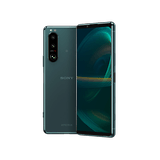




















Sony has just made a big mistake by leaving what it was doing good (I would say the best) - small and powerfull phones - the real Compact series. If this would have 1-2cm less in length with the same specs, I would guess it would be a bestseller. Simply because there is no competitor in that category and there are still plenty of people who would be after a pocket phone you don't have to have wheels for to carry it around.
And the price, yes, that's Sony's long term issue and no one (except for them perhaps) understands it. If they put the price tag $200 lower, their sales would raise by a several digits and they would make profit out of the scale. At least Sony phones are known for price dropping quite quickly (as they are not saleable for the initial prices).
The knowledge & quality of this review is exactly like the free apps you offer each & every week, TOTAL RUBBISH. Stick to reviewing Samsung, Apple & Chinese manufacturers, as you seem to be salivating over those products